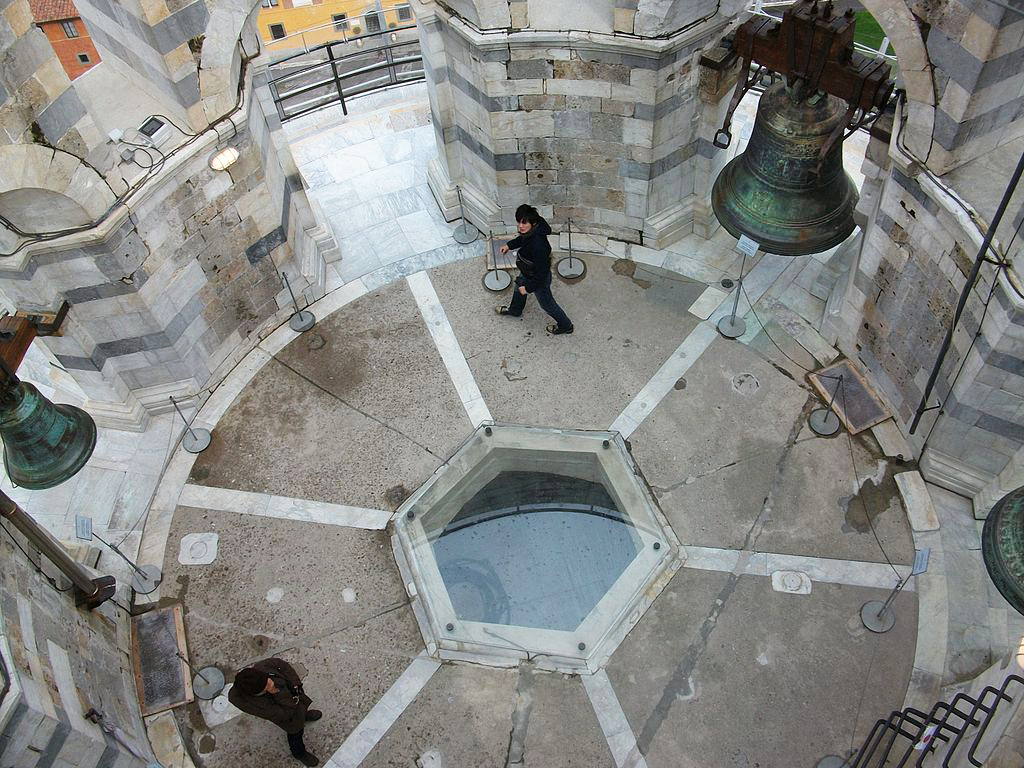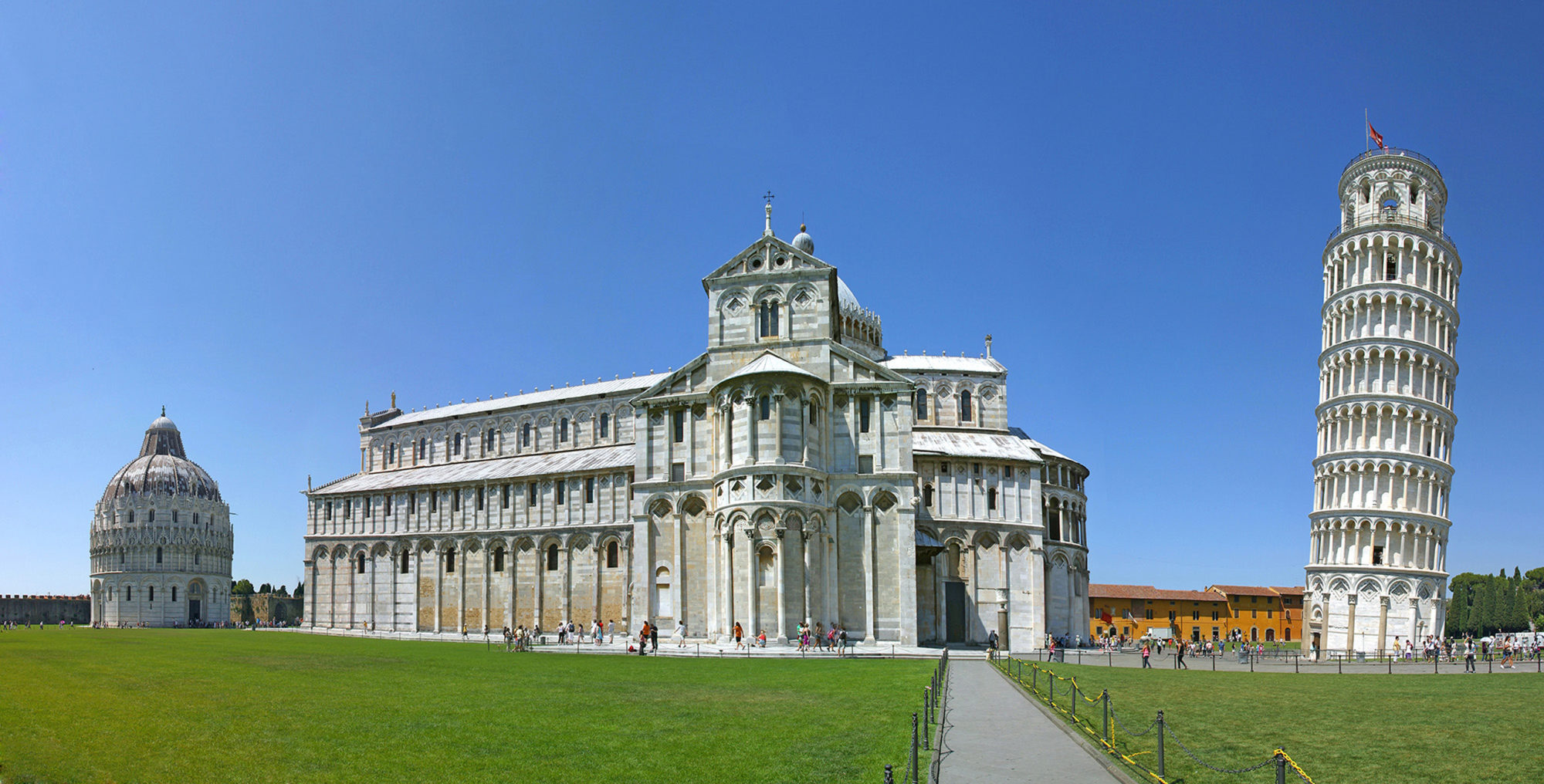visiting the leaning tower
A visit to the Tuscan city of Pisa would not be complete without a visit to its most famous monument, La Torre Pendente di Pisa, the Leaning Tower of Pisa. Most of the tourists admire the structure from the outside, frequently taking silly pictures while appearing to hold up the structure and then posting the photographs on Instagram.
Far fewer venture up the eight stories of the architectural beauty, which may well be the most representative monument of Italy after Colosseum. The entrance admission to the tower is 18 euros and only forty people can go up at one time. Perhaps this is why many stand on the ground rather than venturing the climb. But they are missing a worthwhile experience and thankfully one that appears secure for centuries to come.
By 1990, the tilt of the world-famous tower had reached five and one half degrees, a frightening amount for a structure that was well over six centuries old. The tower was stabilized by remedial work between 1993 and 2001, which reduced the tilt, now stabilized with four degrees of inclination, or 12 feet 10 inches from vertical at the very top of the tower to the ground. It is one of the most visited monuments in the world, thanks also to the beautiful background that surrounds it, La Piazza dei Miracoli, the Square of Miracles, a UNESCO World Heritage Site.
The Leaning Tower is the campanile or bell tower of the Pisa Cathedral. Construction began in 1173, but its true beginnings started a year earlier. On January 5, 1172, Donna Berta di Bernardo, a widow and resident of the house of dell’Opera di Santa Maria, bequeathed sixty soldi to the Opera Campanilis petrarum Sancte Marie. The sum, which would have the equivalence of well over $100,000 today, was used to purchase the stones which formed the foundation and base of the bell tower. The first stones were laid on August 9, 1173. The tower was to be the tallest of its time, but the architect likely did not realize that the word “pisa” was actually an ancient Etruscan word meaning “marshy land.”

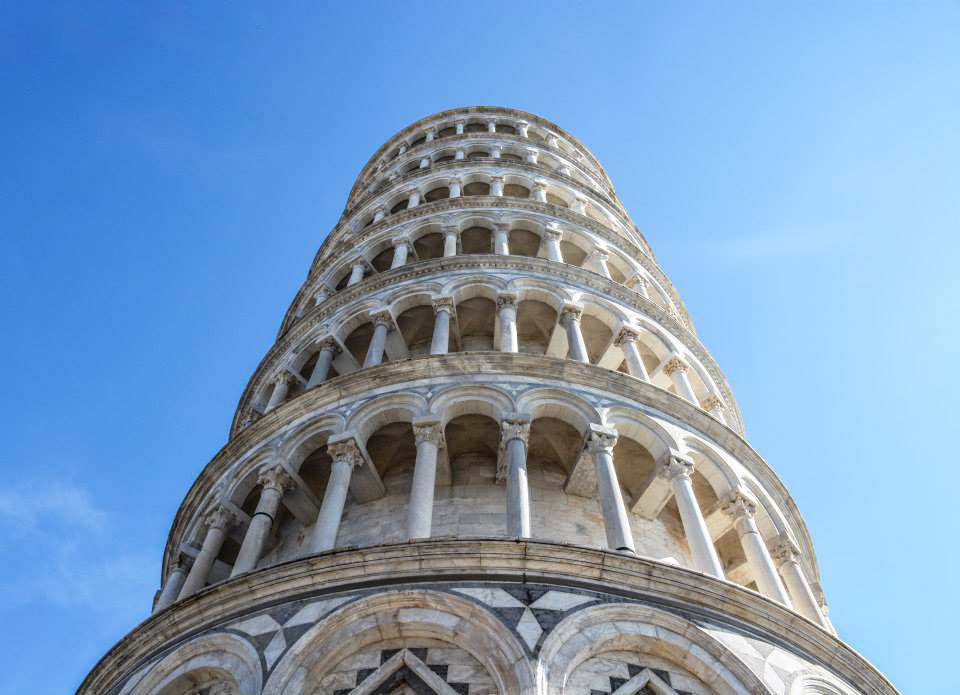
who built the leaning tower?
There has been much controversy about the identity of who was the tower’s architect. For many years, the design was attributed to Guglielmo Bonanno Pisano, a well-known 12th century resident artist of Pisa, known for his bronze casting, particularly in the Pisa Duomo. A piece of cast bearing his name was discovered at the foot of the tower in 1820, but this may be related to the bronze door in the façade of the Cathedral that was destroyed in 1595. A 2001 study seems to indicate Diotisalvi was the original architect, due to the time of construction and similarity with his other works, notably the bell tower of San Nicola and the Baptistery, both in Pisa.
When the third floor had been completed, due to the unstable sandy clay soil below and an all-too shallow foundation of ten feet, the tower started to lean. The construction was halted for about 100 years, while the Republic of Pisa was embroiled in battles for supremacy with the city-states of Genoa, Lucca and Florence. This period of time likely helped the soil to stabilize to a degree. When the belfry was completed in 1372, almost two centuries had passed since its first block was laid and various attempts to correct the inclination had failed.
The height of the tower is 183 feet on its low side and 186 feet on the high side and the walls are eight feet thick at the base. It is hard to believe that nearly 650 years after its completion, there is considerable disagreement about the number of steps to get to the top of the tower. Some list the number as 296, others at 294. The actual answer cannot be provided because the final steps to the top of the belfry are not accessible to the public. If you count the number of steps from the ground to the bell chamber, the highest level permitted for visitors, it is 269 steps. This is the number that the Publisher of the Italian Tribune, Buddy Fortunato counted on his first visit to Pisa, on his honeymoon 49 years ago, when he climbed to tower. “You won’t believe the pull of gravity as you ascend the spiral stairs,” said Buddy, “No wonder Galileo thought to use it for his famous experiment.”
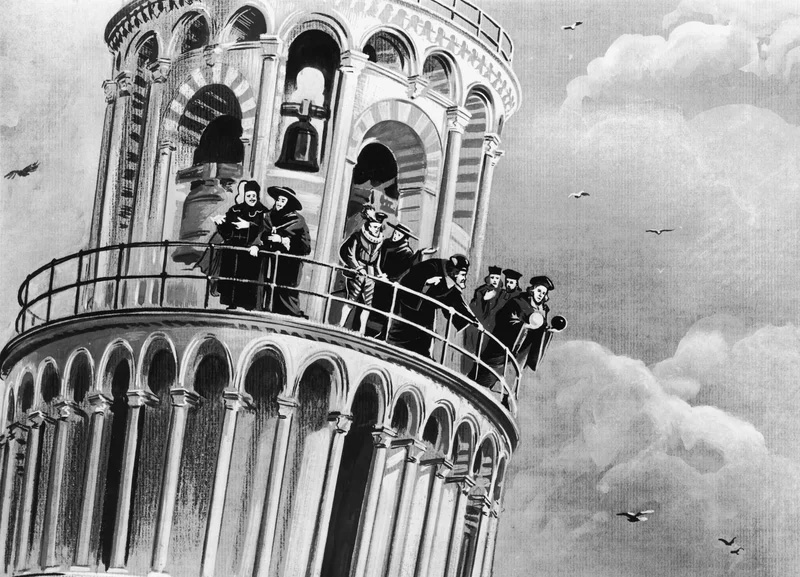
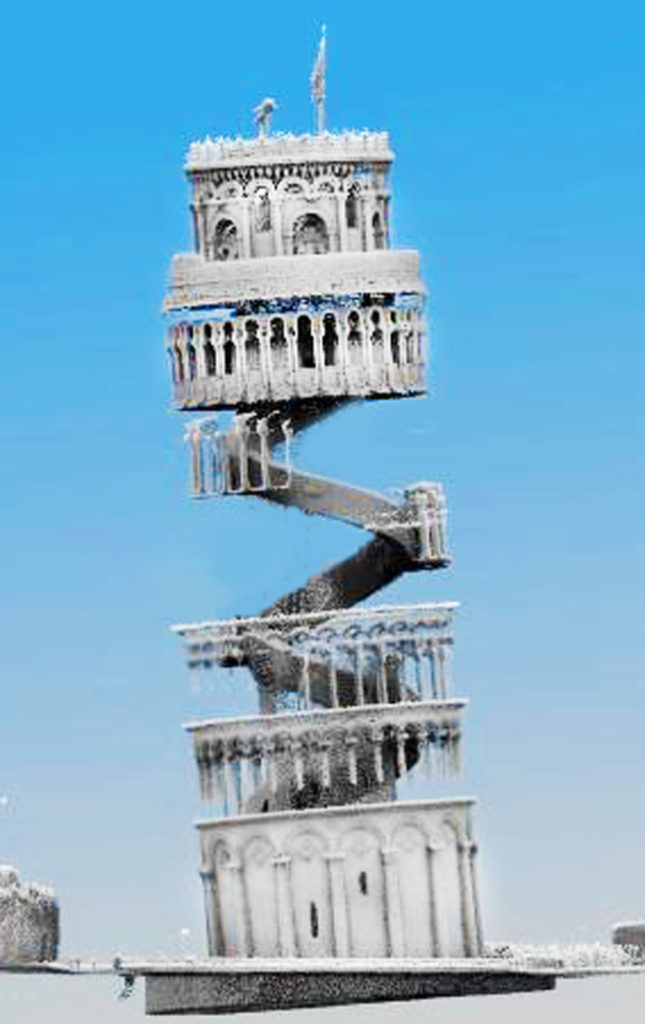
architecture of the leaning tower
The decorative design of columns and arches make it one of the loveliest towers in Italy. Carved reliefs of Pisa’s naval power are engraved at its entrance. Climbing the steps to the top is suggestive of both time and the passage of people who have followed each other up the curling spiral staircase for centuries. The walls are worn by the hands that have leaned on them to find support during the climb and on each floor you can see Pisa from a higher point, up to the top floor to find the city 170 feet below. It is here where, (as noted by Buddy Fortunato) in the late 16th century, Galileo Galilei, then professor of mathematics at the University of Pisa, dropped two cannon balls of different weights to demonstrate the effects of gravity.
Thinking Retirement to Tuscany?
At the top, in addition to the splendid view, there is the belfry which houses seven bells, one for each major note in the musical scale. None of the bells have been rung in decades. Restorers and engineers worry that their movements and vibration could have ill effects on the soil below. Each bell has its own name. Assunta is the largest one, weighing over 5,700 pounds. Others are the Crucifix, San Ranieri, Terza and Vespruccio. Dal Pozzo, the smallest bell, is also the newest. It was recast in 2004 and has thus never been rung in the tower. The oldest, Pasquereccia, dates back to 1262. Its name comes from Easter and used to be heard only on that holiest of days each year. However, it is older than the bell-chamber itself. Originally it was located in Pisa’s Tower Vergata in Palazzo Pretorio, where it was called La Giustizia, meaning justice. The bell tolled to announce executions of criminals and traitors; the most famous being Count Ugolino in 1289, who later figured prominently in Dante’s “Divine Comedy.”
The lean of the tower has not increased by any measurable amount since 2008 and engineers feel that the tower is safe from any instability for at least another 200 years. Curiously, the sandy clay soil that led to the tower’s famous lean is also part of the reason that it still stands. Pisa has experienced four major earthquakes since 1280, but the composition of the soil and circular construction of the tower created an ideal balance of flexibility in the soil and rigidity of the structure. If the tower had a square foundation built on bedrock, it is likely to have toppled centuries ago, proving that sometimes even monumental mistakes can be fortuitous.
